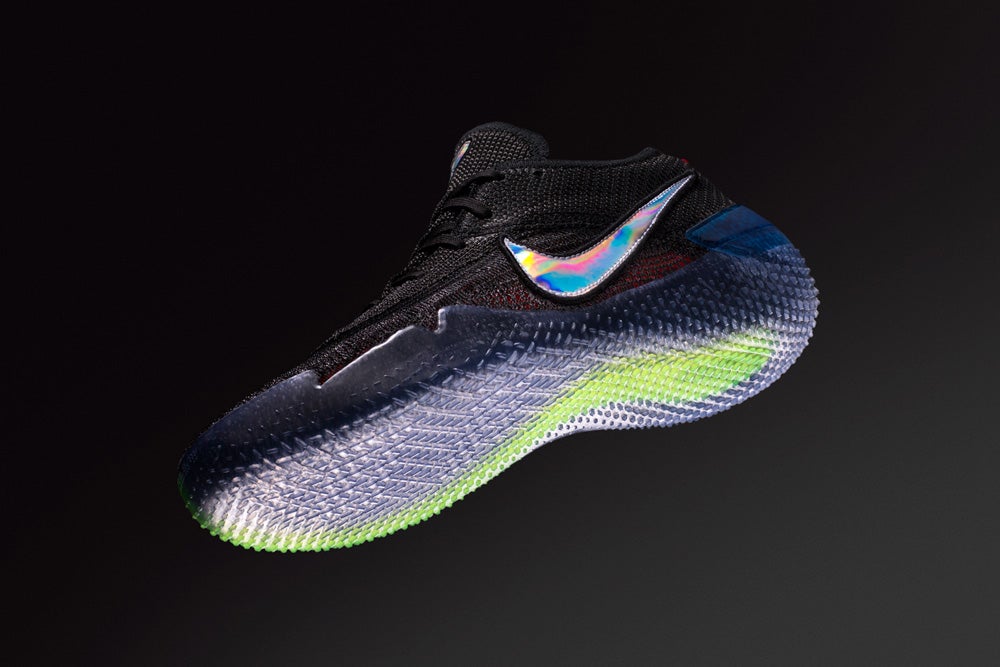Nike’s Flyknit 360 sneakers fit like 3D-printed socks
Weaving specific yarns into complex 3D patterns give Nike's Flyknit 360 shoes a secure fit.

We may earn revenue from the products available on this page and participate in affiliate programs. Learn more ›

Nike Flyknit 360
Sneaker seams are hard on feet, especially when you’re an athlete. Overlapping material creates ridges that rub your skin over time, and the rounded edges of your feet cram into the squared corners of a show where the upper meets the sole. “When an athlete switches direction or plants their foot,” says Tony Bignell, Nike’s VP of footwear innovation, “it’s like a car crash inside the shoe.” Nike aims to fix these pain-inducing moments “micromovements” by making athletic shoes more like comfy socks with its new Flyknit 360 tech.
The new 360 tech first showed up in a soccer shoe called the Mercurial Superfly 360 back in February, but now it’s expanding to a basketball sneaker in the Kobe NXT 360, a running shoe in the Free RN Motion 360, and the Mercurial Vapor 360 for soccer.
Time to make the Flyknit
Nike first started knitting its Flyknit uppers from thread, which uses recycled polyester as a base, but includes a range of other materials to add things like support and weather resistance. “We started with running,” says Bignell. “It was the natural place to start. All the motion goes forward when they put one foot in front of the other.” Using its knitting process, Nike created a one-piece upper that it could freely manipulate using different types of yarns. For example, the company could use weatherized thread only where the shoe actually needed it, optimizing breathability without letting in water.
The method also gave Nike access to a new manufacturing process—one using a smaller machine that it can deploy to different parts of the world. So, rather than producing completed sneakers and shipping them, it could send out raw materials, which helps eschew the traditional hub-and-spoke distribution process.
“The machine is about the size of a big oven,” says Bignell. It uses digital models of the shoes and stocks of material to weave the specific patterns required to make Flyknit kicks.

Nike Kobe NXT 360
Flyknit 360
Nike’s new Flyknit tech debuted back in February in the form of a high-end soccer boot called the Mercurial Superfly 360.
Rather than using a hardened sole plate, the shoe’s sock liner has an internal, hardened chassis specifically created to match each shoe depending on its size. Before, the company based everything on a size 9 and scaled, but the 360 tech allows for a more specific fit that matches athletes’ bone composition.
The new sneaker also uses Nike All Conditions Control material—its weatherproof fabric—but instead of serving as an exterior layer, it’s woven into the overall fabric of the shoe at the thread level.

Nike Flyknit Mercurial
Going forward toward customization
For its new Flyknit shoes, Nike is bringing as much of the process into Flyknit territory as possible. Even the structural elements of the shoe like the chassis are made from material in thread form. It uses heat to evenly harden pieces where they need support, which means the stiffer parts of the shoe are actually woven into a 360-degree sock rather than glued on later.
According to Bignell, this also helps considerably reduce the amount of wasted material compared to the typical cut-and-sew method, which leaves an excess of scraps. Nike estimates Flyknit cuts that waste by roughly 60 percent.
Right now, Flyknit 360 isn’t designed to make truly custom shoes on a personal basis. But Bignell suggests that technology is coming. “You won’t have it today and you won’t have it tomorrow,” he says. “But, that is something I expect to see in the future.”
